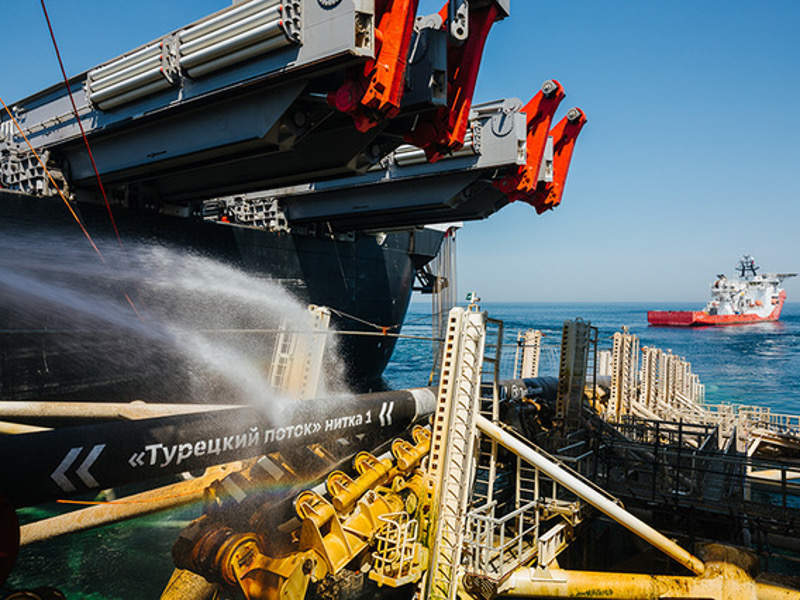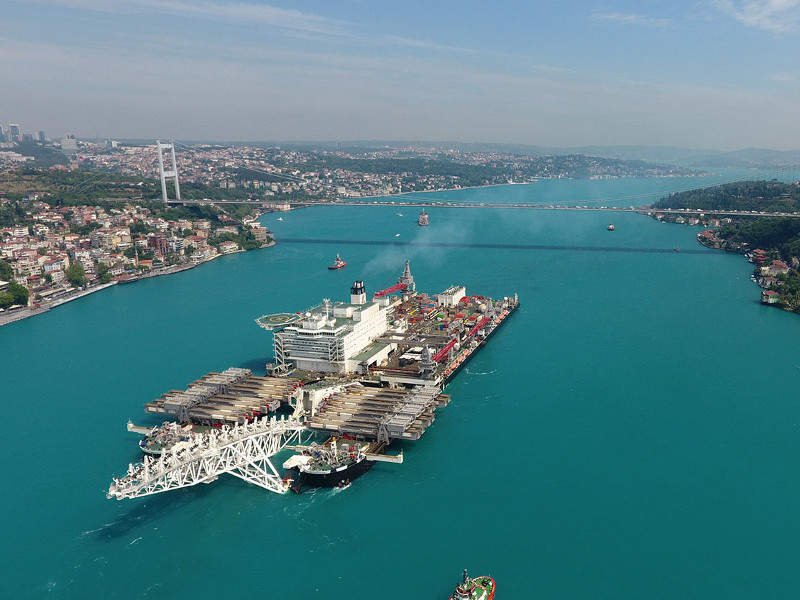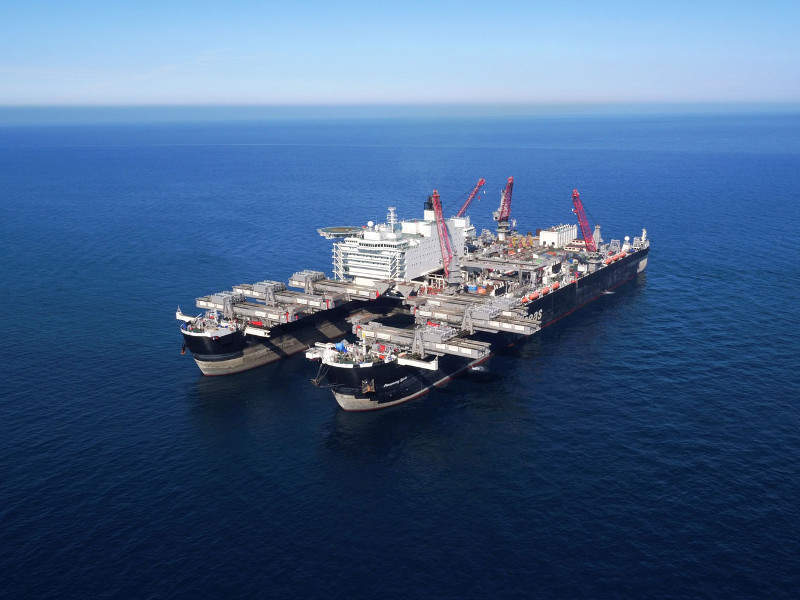The TurkStream pipeline is a 930km offshore natural gas pipeline that runs across the Black Sea to connect Russian gas reserves to Turkey and south-east Europe. The pipeline starts near the Russian coastal town of Anapa and makes landfall at the Thrace region in Turkey.
The TurkStream pipeline project is developed by Gazprom and its subsidiary South Stream Transport. The pipeline is designed to carry 31.5 billion cubic metres (bcm) of gas a year and consists of two lines. The first line feeds gas to Turkish customers, while the second is intended supply gas to consumers in the south and south-east regions of Europe.
The TurkStream pipeline was commissioned with the start of gas supplies to Turkey in January 2020.
TurkStream pipeline development history
Gazprom signed a memorandum of understanding (MoU) with Botaş Petroleum Pipeline Corporation, a Turkish company, in December 2014 for the construction of the gas pipeline. A notice request was submitted by Gazprom in January 2015 for the commencement of front-end engineering and design (FEED) of the offshore segment of the pipeline.
Turkish authorities granted permission to conduct engineering surveys for the subsea section of the pipeline in July 2015. An MoU was signed by Greece and Russia in relation to the construction and operation of the TurkStream in Greek territory during the same period.
Environmental impact assessment (EIA) for the construction of seabed trenches was approved by the Turkish government in September 2017.
The installation of the offshore section of the pipeline in the Black Sea was completed in November 2018, while the gas receiving terminal near the Turkish town of Kiyikoy was completed in March 2019.
Injection of natural gas into the first of the two pipelines started in October 2019.
TurkStream pipeline route
The TurkStream pipeline begins at the Russkaya compressor station located in the coastal Russian town of Anapa. The offshore section of the pipeline spans 230km in the Black Sea offshore Russia, while the remaining 700km passes through the Turkish exclusive economic zone of the Black Sea.
The pipeline makes landfall at Thrace, Turkey, and continues onshore for 180km from the Turkish Black Sea coast to the Turkey-Greece border. It connects to a receiving terminal near Kiyikoy village in Turkey, 100km west of Istanbul, before ending at Ipsala via Luleburgaz at the Turkish-Greece border.
TurkStream pipeline design
The TurkStream gas pipeline is laid in water depths of up to 2,200m, which makes it the first of its kind pipeline to be laid at such depth.
The pipes are made of 39mm high-grade carbon manganese steel. It has a three-layered external corrosion-resistant coating of polypropylene and an internal epoxy coating for protection against friction.
The walls of the 32in-diameter pipeline are capable of resisting an internal pressure of 300bars. The pipelines in shallow waters closer to the shore have an additional concrete coating of up to 8cm thickness.
Construction of the natural gas pipeline
An estimated 300,000 pipes, each 12m in length and having a diameter of 81cm, are connected via joints to form two parallel pipelines. Construction on the first leg of the pipeline started in May 2017 by Allseas Group’s pipe-laying vessel Audacia. The pipe joints were welded onto the on-board main string, after which the weld was tested and coated before being placed in the water.
Allseas Group’s Pioneering Spirit, the world’s largest construction vessel, was used to lay approximately 5km of the pipeline on average each day. The vessel commenced laying of the second line in June 2018. In August 2018, the vessel set a world record in the industry by constructing 6.3 km of the pipeline in a single day.
The work for the construction of the receiving terminal near Kiyikoy in Turkey was initiated in January 2018. The nearshore work on the project started near the Turkish town of Kiyiköy in July 2018.
Contractors involved
Petrofac was awarded the contract for the construction of the receiving terminal in Turkey in September 2017. Tekfen was contracted by Petrofac as the subcontractor for the project.
South Stream Transport contracted Allseas Group for laying the first and second strings of the pipeline.
United Metallurgical Company was contracted for delivering the pipes for the TurkStream pipeline.





